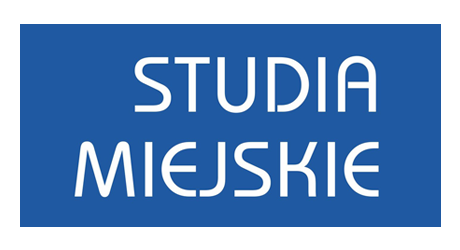Anholt S., 2006, The Anholt-GMI City Brand Index. How the World sees the world’s best cities, „Place Branding" vol. 2, nr 1.
Castells M.,1996, The rise of the network society, Blackwell, Cambridge.
Cudny W., 2006a, Przemiany przestrzenne i funkcjonalne Tomaszowa Mazowieckiego w okresie transformacji, „Szlakami Nauki” nr 35, Łódzkie Towarzystwo Naukowe, Łódź.
Cudny W., 2006b, Przemiany w fizjonomii ul. Piotrkowskiej w Łodzi, „Acta Universitatis Lodziensis. Folia Geographica Socio-Oeconomica” nr 7, s. 183-200.
Cudny W., 2008a, Rola prywatnych inwestorów w rewitalizacji terenów poprzemysłowych Łodzi, „Prace Komisji Krajobrazu Kulturowego” nr 10, Komisja Krajobrazu Kulturowego, Sosnowiec, s. 379-385.
Cudny W., 2008b, The Radegast Station Holocaust Monument — its history, contemporary function and perception in the eyes of tourists and Lodź inhahitants, „Bulletin of Geography. Socio-Economic Series” vol. 9, s. 97-106.
Cudny W., 2011, Model przemian miasta postsocjalistycznego - przykład Łodzi, „Studia Miejskie” t. 4, s. 153-159.
Cudny W., 2012, Socio-economic transformation of smali towns in East Germany after 1990 — Colditz case study, „Bulletin of Geography. Socio-Economic Series” (w druku).
Gieryn T.F., 2002, What buildings do, „Theory and Society” vol. 31.
Gospodini A., 2004, Urban morphology and place identity in european cities: Built heritage and innovative design, „Journal of Urban Design" vol. 9, nr 2.
Haila A., 1997, The neglected builder ofglobal cities, [w:] Cities in transformation - transformation in cities. Social and symbolic change of urban space, red. O. Kalltorp, I. Elander, O. Ericson, M. Franzen, Avebury, Hampshire.
Harvey D.,1989, From managerialism to entrepreneurialism: The transformation in urban governance in late capitalism, „Geografiska Annaler” vol. 71B.
http://suw.biblos.pk.edu.pl/resources/il/i3/i8/i7/rl387/KurylowiczE_DzieloArcydzielo.pdf.
http://popupcity.net/2009/05/top-20-of-the-worlds-best-city-icons/ (dostęp 10 maja 2011).
Jencks C., 2006, The iconic building is here to stay, „City” vol. 10, nr 1.
Kosiński W., 2008, Kontekst i kontrast, [w:] Definiowanie przestrzeni architektonicznej, red. D. Kozłowski, M. Misiągiewicz, Wyd. Politechniki Krakowskiej, Kraków.
Kuryłowicz E„ 2011, Dzieło-arcydzieło a ikona we współczesnym mieście. Detronizacja czy nobilitacja dla idoli XXI wieku? BPK, Biblioteka Cyfrowa Politechniki Krakowskiej, Kraków.
Technology, talent, and tolerance: Attracting the best and brightest to Memphis, 2002, aut. C. Coletta, D. Mabury, D. Williams, T. Jones, The Memphis Talent Magnet Report, Memphis.
Temelova J., 2004, Contemporary buildings in citypromotion: Attributes andfoundation ofhigh-profile structures.
The case ofPrague and Helsinki, „Research and Training NetWork Urban Europę” nr 10.
Ward J„ 2008, City branding, [w:] Crucial words. Conditionsfor temporary architecture, Birkhauser.
www.szancer.pl
Zukin, S., 1997, Cultural strategies and urban identities: Remarkingpublic space in New York, [w:] Cities in transformation - transformation in cities. Social and symbolic change of urban space, red. O. Kalltorp, I. Elander, O. Ericson, M. Franzen, Avebury, Hampshire.
Google Scholar

